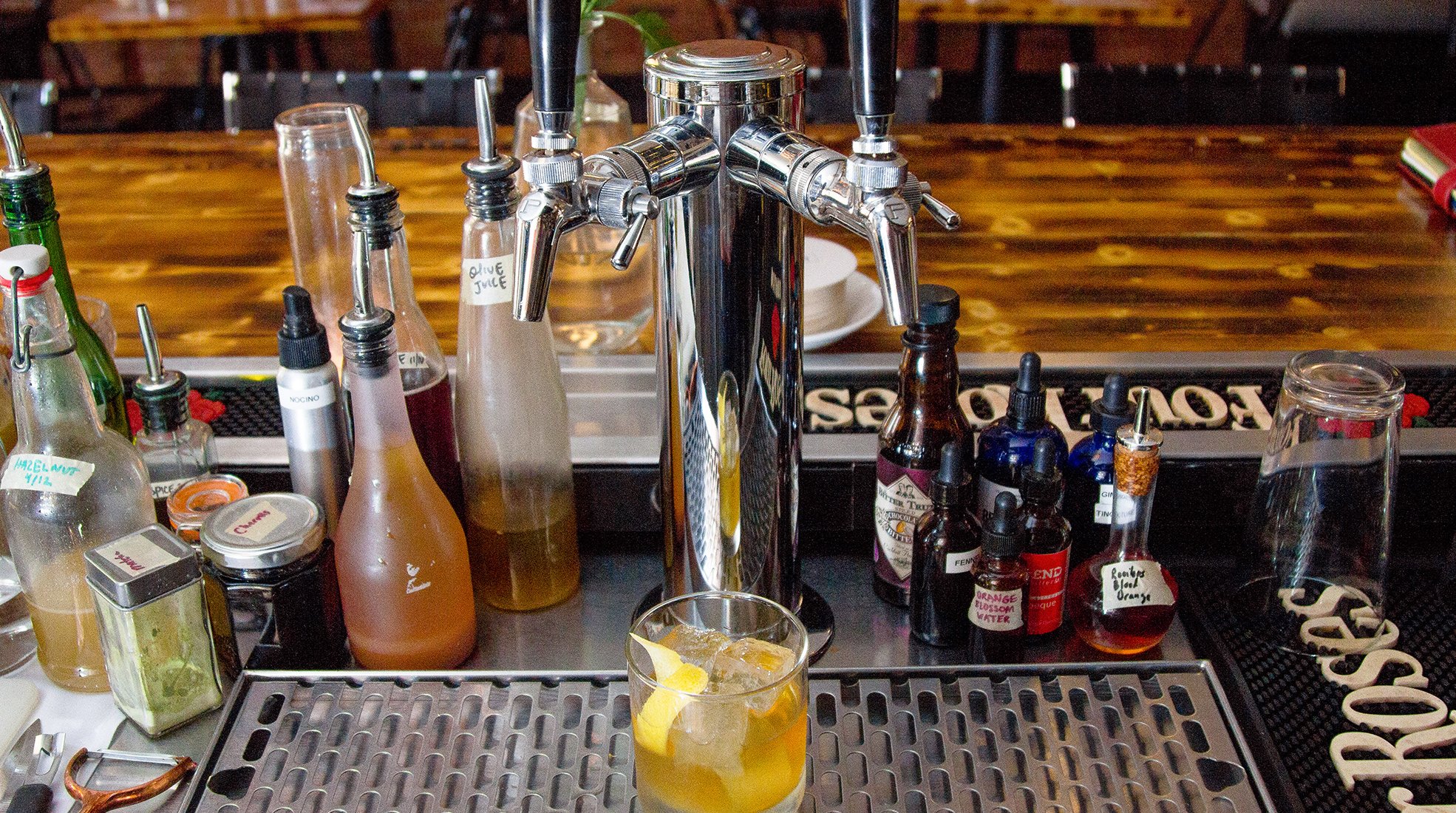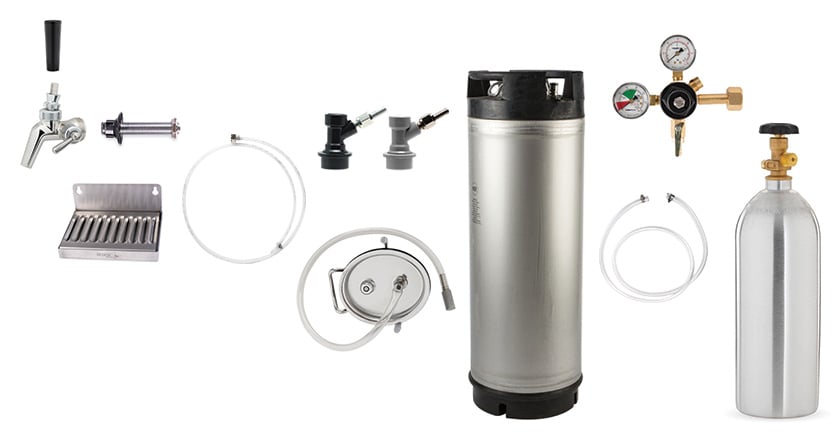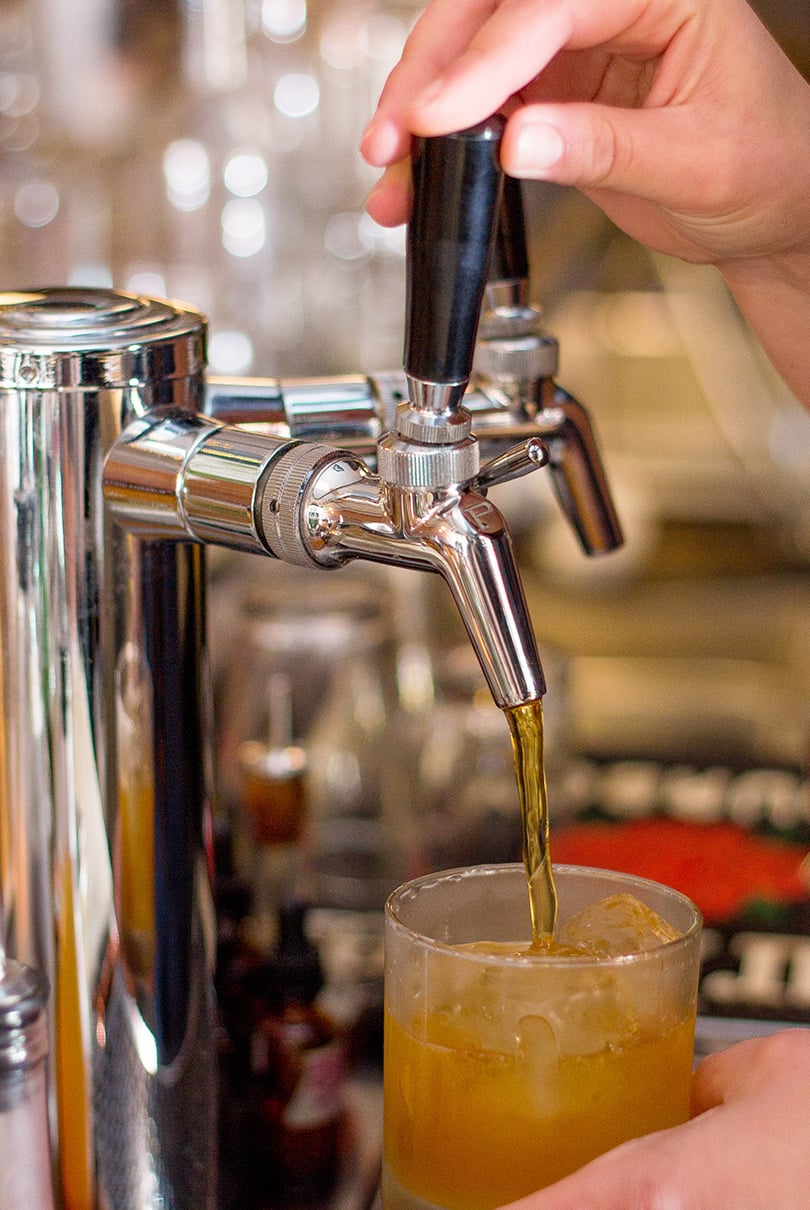
Cocktails on tap are popping up on bar menus across the country, and the appeal is easy to understand. Pouring a cocktail on draft expedites service and ensures consistency from drink to drink and bartender to bartender. And where there are improvements to volume and quality, revenue is sure to follow suit.
Time is money. The faster your staff can prepare a drink, the less it costs your bar to make said drink. Some of those cost savings can be passed to the customer (who may end up ordering another because they are so affordable), and some can go straight to your bottom line.
With kegged cocktails, menu offerings like cocktail flights are completely feasible. They also afford you the ability to pour small tastes of what’s on tap for indecisive or inquisitive customers. Just be sure to factor in the cost of samples when pricing out your batch.
Force carbonating a cocktail is difficult if you’re making drinks individually, but force carbonating a keg of cocktails is a different story. With a draft system, fizzy Gin & Tonics, Pimm’s Cups, Mojitos, and more can be ready with the pull of a tap handle.
Draft cocktails eliminate many of the tedious gesticulations that craft cocktails typically require. That means customers receive their drinks fast, even when the bar is slammed.
With cocktails on tap, every drink will taste the same regardless of who’s pouring. Even inexperienced bartenders can serve a perfect draft cocktail (as long as someone experienced is doing the batching).

Batching a cocktail isn’t always as easy as multiplying the measurements in a single-drink recipe by the number of desired servings. And even if you’re thinking in terms of ingredient ratios, adjustments to proportions are sometimes necessary in large volumes. Moral of the story: it takes a skilled and experienced bartender to make a nuanced and well-balanced big batch cocktail.
If you’re kegging a cocktail made of ingredients with varying densities (spirits and fruit juice, for example), you’ll want to agitate the kegs regularly to keep the cocktail from separating.
Pouring a draft cocktail over ice doesn’t dilute it the way shaking or stirring would. To compensate, you need to incorporate water into your recipe. Alternatively, you can stir or shake a kegged cocktail with ice before you serve it, but then you are reintroducing some of the à la minute labor you were hoping to eliminate.
Particles and sediment in fresh juices can build up in draft lines, which can promote bacteria and mold growth and lead to clogs. To mitigate the risk, be sure to filter your ingredients well before kegging and clean your lines obsessively. (And just avoid egg whites altogether.)
Fresh ingredients like citrus juices degrade quickly, which will alter the taste of a kegged cocktail if not consumed quickly. If you don’t anticipate kicking your keg within a couple of days, it is best to stick with spirit-forward drinks that tend to improve with time like Negronis and Manhattans.
Pre-batching cocktails is against the law in some areas. Make sure you know the rules where you operate.
There are two primary setup options for pouring chilled cocktails.


Have questions about your unique program or setup? Give our draft specialists a call at 1.888.415.2803 or fill out the form below.
Quick Turnaround Times
60-Day Return Policy
Through SSL Protection
Dedicated Sales Rep